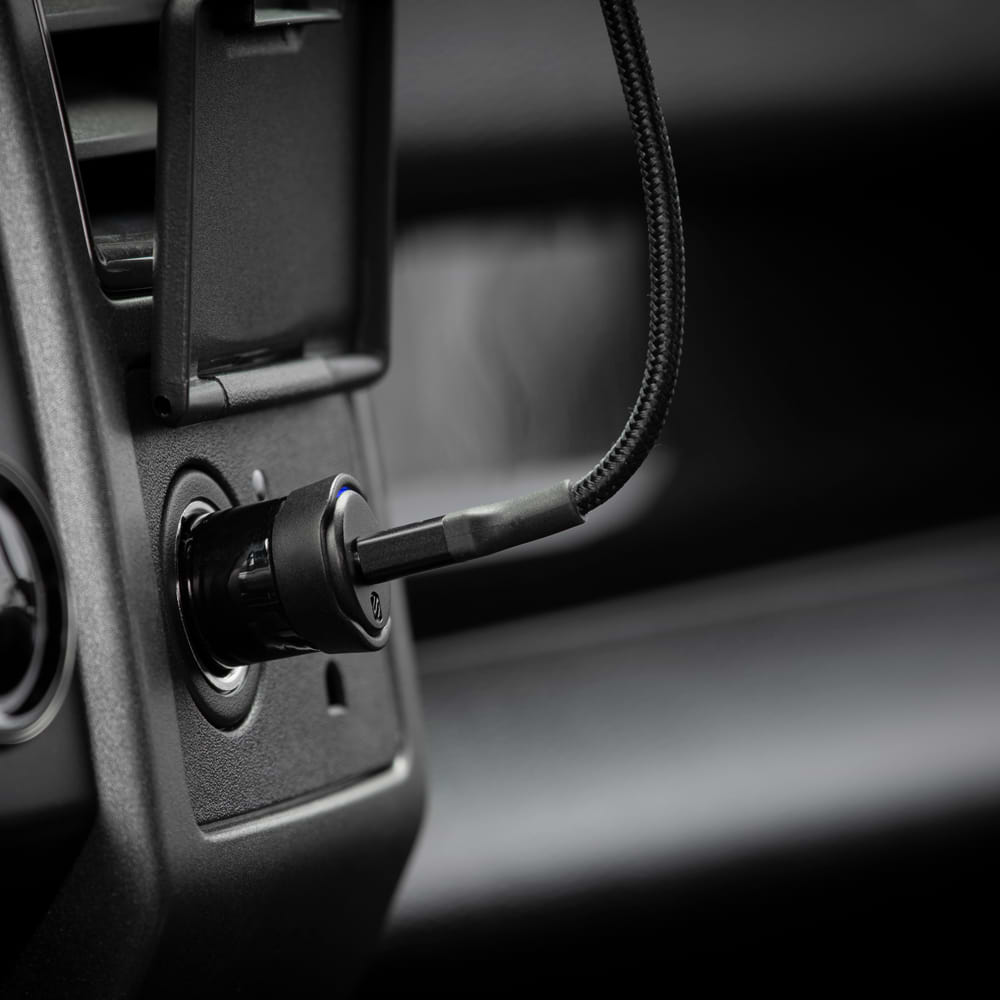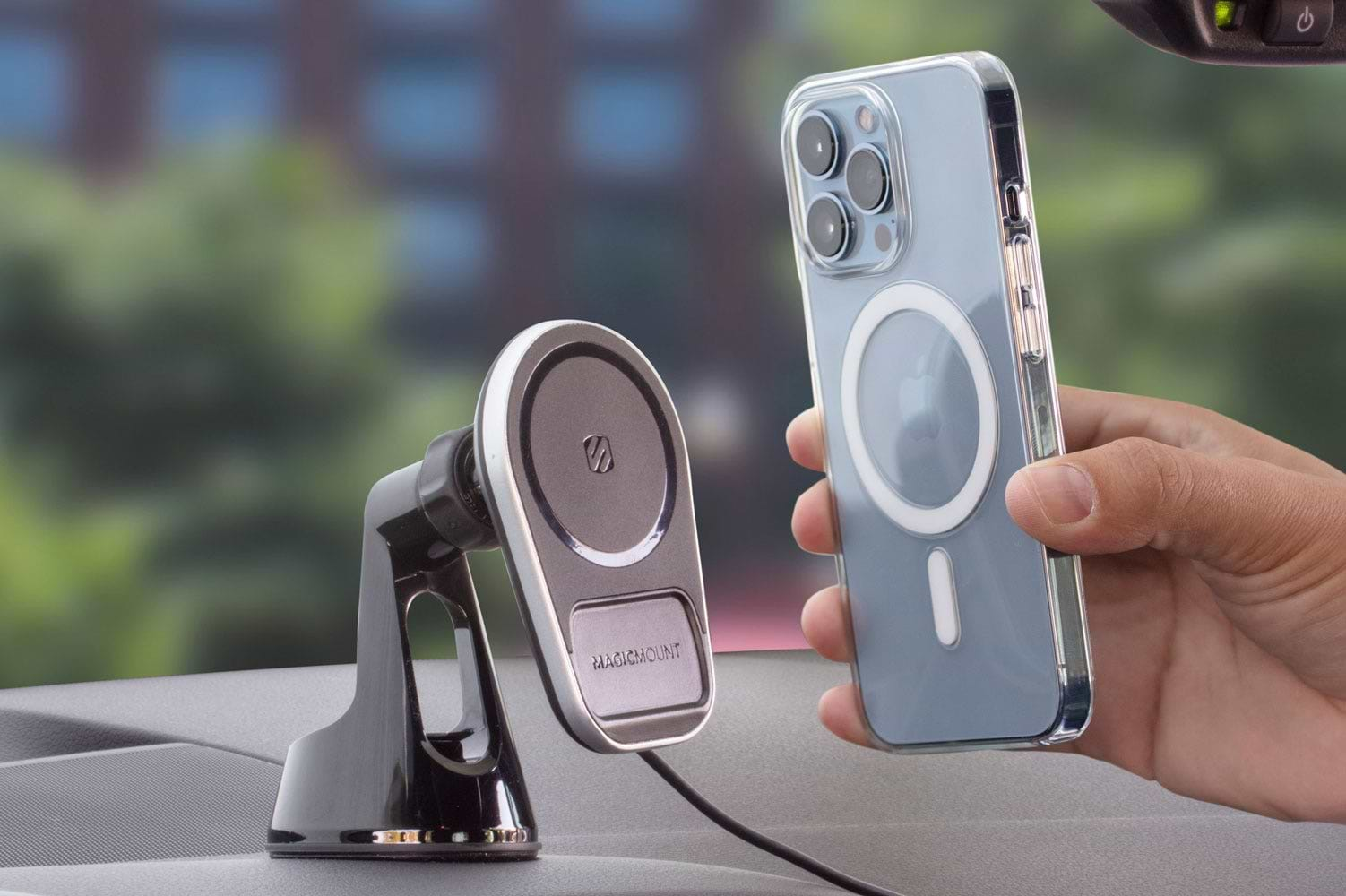Car Phone Charging: Impact on Battery Drain

In today's fast-paced world, our smartphones have become an indispensable part of our lives. Whether it's for communication, navigation, or entertainment, we rely heavily on our phones. However, with great power comes great responsibility. One of the key concerns for smartphone users is battery drain, especially when charging while on the go.
In this article, we will delve into the impact of car phone charging on battery drain, understanding the science behind it, debunking common misconceptions, providing tips to minimize battery drain, and exploring future trends in car phone charging technology.
Understanding the Basics of Car Phone Charging
Before we delve into the impact of car phone charging on battery drain, let's first understand how car phone chargers work and the science behind them.
Car phone chargers have become an essential accessory for many people, allowing them to charge their phones while on the go. But have you ever wondered how these chargers actually work? Let's take a closer look at the science behind car phone chargers.
The Science Behind Car Phone Chargers
Car phone chargers operate on the principle of converting the car's electrical energy into a suitable form for charging the phone. They consist of electronic circuitry that regulates the voltage and current supplied to the phone's battery.
Inside the charger, there are various components that work together to ensure a safe and efficient charging process. One of the key components is the voltage regulator, which controls the voltage supplied to the phone's battery. This is important because different phones have different voltage requirements, and supplying too much or too little voltage can damage the battery.
In addition to the voltage regulator, car phone chargers also have a current regulator. This component controls the amount of current flowing from the car's battery to the phone's battery. By regulating the current, the charger prevents the battery from overheating or getting damaged due to excessive charging.
How Car Phone Chargers Work
Now that we understand the science behind car phone chargers, let's take a closer look at how they actually work.
When you connect your phone to a car charger, it establishes a circuit that allows the flow of electrical energy from the car's battery to the phone's battery. The charger adjusts the voltage and current to match the phone's requirements, ensuring safe and efficient charging.
But how does the charger know how much voltage and current to supply? Well, it's all thanks to a process called "handshaking." When you connect your phone to the charger, it communicates with the phone to determine its voltage and current requirements. This information is then used by the charger to adjust its output accordingly.
Once the charger has established the correct voltage and current, it begins the charging process. The electrical energy from the car's battery is converted into a form that can be stored in the phone's battery. This process continues until the phone's battery is fully charged or until you disconnect the charger.
It's worth noting that not all car phone chargers are created equal. Some chargers may provide faster charging speeds than others, depending on their design and specifications. Additionally, certain chargers may have additional features such as built-in surge protection or compatibility with fast charging technologies.
So, the next time you connect your phone to a car charger, take a moment to appreciate the science and technology behind it. Car phone chargers have come a long way, and they continue to evolve to meet the ever-increasing power demands of our smartphones.


The Relationship Between Car Charging and Phone Battery Drain
Now that we understand the basics of car phone charging, let's explore the relationship between charging in the car and phone battery drain.
When it comes to car charging, the impact of voltage and current cannot be overlooked. The voltage and current supplied by the car charger can have a significant impact on the battery drain. Chargers that provide higher voltage and current tend to charge the phone faster, but they can also lead to increased battery drain. This is because higher voltage and current can generate more heat, which in turn can cause the battery to drain faster. On the other hand, chargers with lower voltage and current may take longer to charge the phone but are gentler on the battery, resulting in less drain.
But it's not just the charger that affects battery drain. The role of phone battery capacity is also crucial. The battery capacity of your phone determines how much charge it can hold, and this capacity plays a significant role in its overall battery drain while charging in the car. Phones with larger battery capacities tend to be more resilient to battery drain and can sustain longer periods of usage while charging. This means that even if you're using your phone heavily while it's charging in the car, a phone with a larger battery capacity will be able to handle the drain better than a phone with a smaller battery capacity. On the other hand, phones with smaller battery capacities may experience a faster drain, especially if used extensively during charging.
So, when it comes to charging your phone in the car, it's important to consider both the voltage and current supplied by the charger as well as the battery capacity of your phone. Finding the right balance between fast charging and battery drain is key to ensuring that your phone stays powered up without compromising its battery life.
Common Misconceptions About Car Phone Charging
Now that we have explored the impact of car phone charging on battery drain, let's debunk some common misconceptions surrounding this topic.
Debunking Myths About Battery Memory
Contrary to popular belief, modern smartphone batteries do not suffer from memory loss, commonly referred to as the "memory effect." This misconception originated from older battery technologies, such as nickel-cadmium (NiCd) batteries, which did exhibit memory effects. However, with the advent of lithium-ion (Li-ion) batteries, this concern is no longer relevant.
Lithium-ion batteries, which are commonly used in smartphones, have a different chemistry that eliminates the memory effect. These batteries have a higher energy density and are designed to be charged and discharged without any negative impact on their long-term performance or capacity.
Therefore, you can charge your phone at any time, regardless of the battery level, without worrying about negatively impacting its long-term performance or capacity. Feel free to plug in your phone whenever it's convenient for you, without any concerns about memory loss.
The Truth About Overcharging
Another common myth is the fear of overcharging your phone. Many people believe that leaving their phone plugged in overnight or for extended periods will damage the battery. However, this is not the case.
Modern smartphones are equipped with sophisticated charging circuitry that automatically stops the charging process once the battery reaches its maximum capacity. This mechanism, known as "trickle charging," ensures that the battery is not overcharged and prevents any potential damage.
In fact, smartphone manufacturers have implemented various safety measures to protect the battery from overcharging. These measures include temperature sensors and voltage regulators that monitor the charging process and adjust it accordingly to prevent any potential harm.
Therefore, overcharging is not something you need to worry about. You can safely leave your phone plugged in overnight or for extended periods without any detrimental effects on the battery's performance or lifespan.
Tips to Minimize Battery Drain While Charging in the Car
To ensure a prolonged battery life and reduce battery drain while charging your phone in the car, consider the following tips.
When it comes to charging your phone in the car, there are a few things you can do to minimize battery drain and maximize the charging efficiency. By following these tips, you can ensure that your phone stays charged and ready for use whenever you need it.
Using Battery Saving Modes
One of the most effective ways to minimize battery drain while charging in the car is to use the battery saving mode on your smartphone. Most smartphones offer this feature, which optimizes system performance and limits background activities to conserve battery power. By activating this mode while charging, you can significantly reduce battery drain and extend the charging time.
When you activate the battery saving mode, your phone will automatically adjust various settings to conserve battery power. It may reduce the screen brightness, limit app notifications, and restrict background data usage. These adjustments help to minimize the power consumption of your phone while it is charging in the car.
Managing Phone Usage During Charging
Another important tip to minimize battery drain while charging in the car is to manage your phone usage during the charging process. Engaging in power-intensive activities, such as playing games or streaming videos, can increase battery drain and impede the charging process.
Instead of using your phone for power-intensive tasks, consider using it for lighter activities that require less battery power. You can browse the internet, read articles, or listen to music. These activities are less demanding on your phone's battery and will allow it to charge more efficiently in the car.
If you need to use your phone for power-intensive tasks, such as watching videos or playing games, it is advisable to wait until the charging process is complete. By doing so, you can ensure that your phone is fully charged and ready for use without compromising the charging efficiency.
Additionally, you can opt for offline activities that do not require an internet connection. This can include reading eBooks, playing offline games, or listening to downloaded music. By engaging in offline activities, you can reduce the strain on your phone's battery and allow it to charge more effectively in the car.
By following these tips, you can minimize battery drain while charging your phone in the car. This will not only help to prolong the battery life of your phone but also ensure that it is always ready for use whenever you need it.
Future Trends in Car Phone Charging Technology
As technology continues to advance, we can expect exciting developments in car phone charging. Let's take a glimpse into the future.
Wireless Charging in Cars
Wireless charging technology is gaining popularity, and we can anticipate its integration into cars in the near future. This convenient technology allows for hassle-free charging without the need for physical connectors or cables.
Fast Charging Technologies and Their Impact on Battery Life
Fast charging technologies are constantly evolving, allowing for shorter charging times. However, it's essential to consider their impact on battery life. Manufacturers are working on optimizing fast charging techniques to maintain long-term battery health.
Conclusion
In conclusion, car phone charging can have a significant impact on battery drain. Factors such as voltage and current, phone battery capacity, and usage during charging can influence the overall drain. However, by understanding the basics, debunking common misconceptions, and implementing effective strategies, you can minimize battery drain and ensure optimal charging in your car. As technology progresses, we can look forward to innovative car phone charging solutions that further enhance our charging experience.